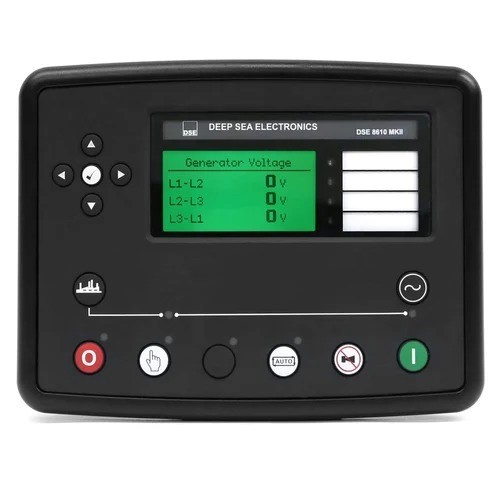Deep Sea Precision: Mastering Synchronization with Controller Guidelines
Power generation sources have become an integral part of businesses and households alike. Installations of more power sources such as generators require a system to access them for the smooth flow of power. To put it straight synchronization of power is essential to ensure proper power flow from one source to another.
Synchronization is a term usually used for the parallel operation of generators. This is a connection that requires to balance the voltage, frequency, phase angle, and phase rotation of all alternators. These values should be equal.
Deep sea controllers equipped with advanced capabilities play a pivotal role in achieving this synchronization. The deep Sea Control panel is the equipment, DSE controller is its brain.

The Heart of Control Systems: Advancements in Deep Sea Controller
Early models of DSE controllers had capabilities for monitoring and control tasks only. In the latest models, it has evolved to have features such as real-time synchronization and remote capabilities. AI also has found applications in them resulting in adaptable and predictive capabilities.
Choosing and Configuring DSE controllers
• Understand System Requirements: A thorough analysis of the power system’s needs is essential for choosing the right controllers. Factors like load variations and system complexity have to be considered.
• Choose the Right Controller: Once the various factors mentioned above are determined it is time to choose a controller from a deep sea controller supplier in UAE accordingly.
• Proper Configuration: The configuration of these controllers should be based on the specification of the system. It should be done such that the controllers are compatible with the generators and other components.
• Timing and Frequency Control: Precise timing and frequency control is critical for effective synchronization. Tune the controller to achieve these results.
Other than this it is also important to make sure that your SE controller adheres with the industry standards. Alertness to these features is required to ensure proper synchronization of power sources.
The process doesn’t end with choosing and configuring the controllers. Load tests and follow-ups are critical for effective and safe operations.
Post-installation procedure
• Thorough Testing: Rigorous testing procedures, including load testing and synchronization trials, are essential to ensure the proper operation of the DSE controller.
• Regular Monitoring: Real-time controller performance analysis is critical for proactive interventions.
• Invest in Operator Training: The operators should be able to efficiently manage and troubleshoot the system. Train operators thoroughly on it.
• Cyber Security and Software Updates: Deep sea controllers might face cyber threats and unauthorized access. Proper cyber security measures are essential to keep them protected. Moreover, the software and firmware of DSE should be updated to gain access to the latest features.
• Explore Remote Capabilities: Remote monitoring and control features are advanced features in DSE. Leveraging this opportunity will help to handle the system efficiently. These features are especially beneficial for remote unmanned areas.
Following these guidelines along with proper documentation will help to have proper synchronisation meanwhile facilitating timely and informed interventions. Consulting with a deep sea controller supplier in UAE is also recommendable. Because they can further educate you on the proper handling of Deep Sea Electronics.
Being the top supplier of DSE controllers Bright Weld is a reliable partner to effectively synchronize your power sources. A strong technical know-how of these devices makes us a unique supplier of DSEs.
